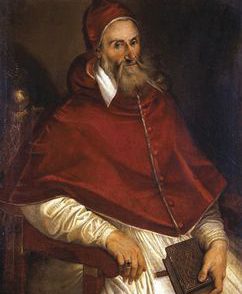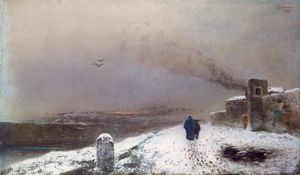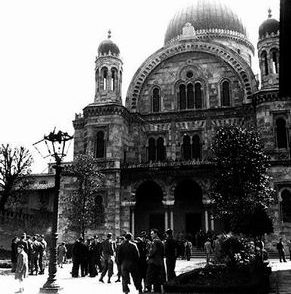Walking into the Duomo beneath its 24-hour counter-clockwise time piece, can feel like stepping through the portals of a time-machine. One enters a space larger and more austere than anticipated. This is the assembly hall of the people of Florence, simultaneously Temple and Forum.
The shock of the secular increases when, instead of seeing frescoes depicting tortured saints, you stare up at the profiles of two proud knights clutching their batons of command whilst mounted on magnificent war-horses. As an Englishman, my chest puffs out, for one of the knights is Johannes Acutus, also known as Sir John Hawkwood, who led his ‘White Company’ from the silent battlefields of France into the active war zone of Tuscany.
An English soldier of fortune placed between Niccolò da Tolentino, the Florentine Captain of Arms, and Dante Alighieri the poet of the Divine Comedy. So how did this mercenary of humble Essex origins (the second son of a tanner) earn his place in this Florentine hall of fame?
The achievement seems more inexplicable when only Hawkwood’s initial decade of professional soldiering in Italy is studied. Granted a contract by the City of Pisa to harass its Tuscan big brother, Hawkwood’s free company of ‘foreign brigands’ camped in the hills surrounding Fiesole. As the fires of his mercenaries were counted by the Florentine guards on the city walls, fear spread throughout the City Republic that the ‘Diabolical Englishman, a ‘Devil Incarnate’, the merciless leader whom St. Catherine of Siena would address as ‘the servant and soldier of the devil’, would unleash his dogs of war on the farms of the Florentine contado.
Hawkwood remained an enemy of Florence for the next 10 years. He was first contracted by Pisa, then by the tyrannical Duke of Milan, and finally by the equally disreputable Papal Legate Count Robert of Geneva. It was the latter who ordered Sir John to carry out a reprisal against the unarmed citizens of the papalcity of Cesena in 1377. What followed was one of the greatest outrages in an era when the sacking of cities was a common occurrence.
Alongside his infamy as the leader of one of the most feared companies of mercenaries in the Italian peninsula Sir John, or Giovanni Acuto, as he has been called, had also gained a reputation as a man who never broke a contract. Fidelity to whomever paid his wages and to the men who served him was always his watchword. It is this that enabled Hawkwood to retain the leadership of his White Company for over 30 years, to eventually form a working partnership with Florence and die an honoured man in the city that he served indefatigably for the last 15 years of his life.
To grasp how the Florentines could adopt this violent foreigner as one of their own requires us to accept that the past is a ‘foreign country’ and that our understanding of the ways of those long dead has to remain at best only partial. The relationship between city states and the condottieri was a paradoxical one. To mobilise the ordinary citizens of an economically advanced city was inefficient in military terms, and considered to be something that interfered with normal business activity. Hiring professionals was far cheaper and more effective than creating a standing army that needs to be armed, housed and fed in times of peace, as well as times of war.
The second factor that explains why the merchant representatives of states like Florence could work with a man like Hawkwood is that they, like him, respected a contract as binding. Sir John was a negotiator and quartermaster. His ability to draw up watertight contracts was as crucial as his military skills.
Once Florence accepted that Hawkwood was the best man available as the city’s protector, he was pleased to accept the position of condottiere for the wealthiest employers in Italy. It was a match made in ‘heaven’, from which both parties benefited. Sir John did not let down his employers down. Riding out at the head of an army, he successfully threatened Milan at age 72.
In 1394 the ailing warrior, ‘returned to the sea’, as the Florentines would express it. He was buried with full honours in the Duomo after lying in state on a golden bier, an unsheathed sword at his side. A fresco was painted on the wall above his grave. When it faded, Florentine artist Paolo Uccello was commissioned to produce a replacement ‘ten arm lengths’ high. Florence was demonstrating that it could offer posthumous fame as well as cash in return for loyalty.
But is that the end of the story? Stand below the fresco and look up at the face of Johannes Acutus. Uccello has painted the face of a living corpse: the pale rider of the Apocalypse, coming to cut a swathe through a field of living flesh.
The Florentine is publishing a series of brief extracts from this rich trove, featuring diplomatic duplicity, courtly indiscretions, misunderstandings and perceptive insights. For more information visit www.medici.org.







